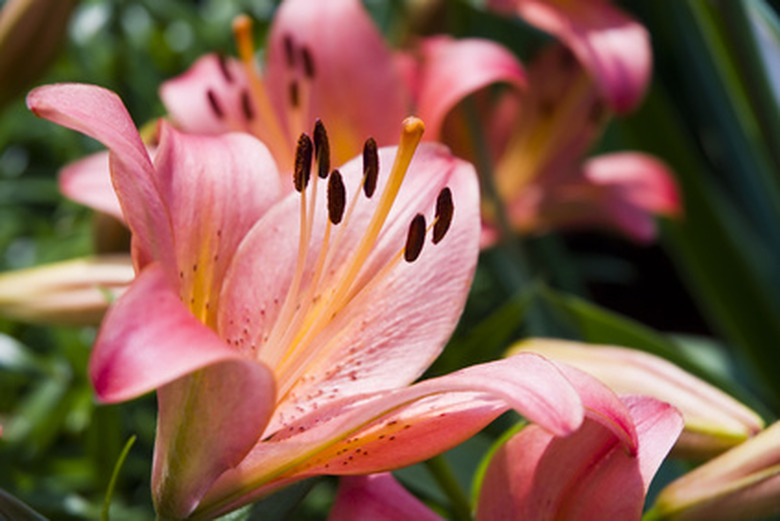List Of Hybrid Plants
Charles Darwin promoted the concept of cross-breeding, but Gregor Mendel is credited with starting the hybrid plant revolution with his genetic studies of peas in the early 1900s. Hybridization took off from there as horticulturists realized they could cross-breed plants within the same species but from different varieties, to attain specific desired physical results inherent in the parent plants. Today's gardeners have thousands of hybridized plants to choose from that feature traits like disease resistance, larger fruits and prolific growth habits.
Stargazer Lilies
These oriental hybrids feature vibrant blooms that measure up to 8 inches in diameter, are very fragrant and come in red, purple, pink and white hues. They grow vigorously throughout the summer and bloom in late summer. Plants are often marketed in the spring and can easily be grown as potted plants. Grow in USDA hardiness zones 4-8. Plant bulbs in the fall or spring at three times the depth of their length. Water regularly as the plant starts to grow and deadhead spent flowers to direct energy back to the bulb for next season's growth.
- Charles Darwin promoted the concept of cross-breeding, but Gregor Mendel is credited with starting the hybrid plant revolution with his genetic studies of peas in the early 1900s.
- Today's gardeners have thousands of hybridized plants to choose from that feature traits like disease resistance, larger fruits and prolific growth habits.
Better Boy Tomatoes
Better Boys have been bred to be resistant to verticillium wilt, fusarium wilt and nematodes, which are all common tomato plant problems. Gardeners and tomato lovers favor the large, bright red fruit, which can weigh up to 1 lb. and mature within 75 days of seedlings being transplanted into the ground. Plant transplants in full sun and where the soil level is just below the first set of leaves, because roots will develop along that part of the stem. Place stakes or cages around plants to provide support as the heavy fruit matures. Water the plants consistently, particularly as they are flowering and bearing fruit.
Meyer Lemon Trees
Meyer lemons, originating in China, are a cross between a true lemon tree and mandarin orange tree. The fruit is much sweeter than traditional lemons, which makes this variety a favorite of gardeners and chefs alike. Meyer lemon trees can be grown outside in climates warmer than zone 8, or can be grown in pots that are brought indoors during cooler months. Buy trees that are 2 to 3 years old. Plant them in soil that is sandy, well-draining and slightly acidic. Keep the soil consistently moist but not soggy.
- Better Boys have been bred to be resistant to verticillium wilt, fusarium wilt and nematodes, which are all common tomato plant problems.
- Plant transplants in full sun and where the soil level is just below the first set of leaves, because roots will develop along that part of the stem.
Sweet Corn
The vast majority of U.S. corn grown are hybrid varieties. The characteristics of these varieties have made it easier for home gardeners to grow and they are sweeter than past crops. Grow sweet corn in larger gardens in rows for successful pollination and subsequent ear development. Plant the seeds in deep, rich, well-drained soil and in an area that receives full sun. Sow the seeds about two weeks after the last frost occurs. Harvest the ears only during the short milk stage, when punctured kernels emit juices that are milky in color.
